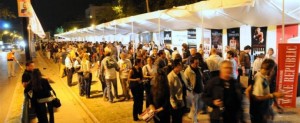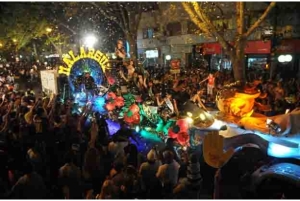“Wine is one of the most civilized things in the world and one of the most natural things of the world that has been brought to the greatest perfection, and it offers a greater range for enjoyment and appreciation than, possibly, any other purely sensory thing.”
― Ernest Hemingway
One of the main attractions that characterize Mendoza is its great wines. According to Wines of Argentina, Mendoza, a World Wine Capital, is the main winemaking province of Argentina, producing more than 80% of domestic wine, and has more than 395,000 acres of vineyards. Many varietals are grown here; the most important ones are Merlot, Cabernet Sauvignon and, of course, internationally acclaimed Malbec.
February and March are my favorite months in Mendoza since harvest time begins; summer is coming to an end, grapes are fully ripen, and the efforts of a whole year of working the land are rewarded in the harvest fruits. In Mendoza, this season stirs a feeling of belonging to the land in Mendocino people; they can mirror the grievances and happy moments in their own lives in the natural cycle of the vine: the grape has suffered and weathered a harsh winter; it has later blossomed, and is now ready to become wine, a blessed and admired result.
During March, the streets are full of life as people get ready to celebrate harvest time. In many stores or even in main streets, wine tastings are offered. Wineries take advantage of this opportunity to offer their products. High quality wines, with good presence, intense aroma, and ripen tannins, can be bought at reasonable prices.
One of the main events is the Blessing of the Fruit in General San Martin Park, carried out during at the beginning of the first week of March. The local Archdiocese presides over an open-air concert which culminates in the blessing of locally grown produce. As Mendoza is almost a desert, growing fruits is a hard task; thus, this celebration is aimed to thank God for a new year of fruit production.
By the end of the first week of March, the Via Blanca Queen’s Parade takes place through the downtown area of Mendoza City. Eighteen floats are driven through the streets at night carrying the queen of each of Mendoza’s districts. This parade is beautiful: ballets companies dance, gauchos ride their horses, and people gather around them to see their performances.
On the next day, the 18 beauty queens once again parade through the city, this time in the morning. This is called El Carrusel de las Reinas. At night, the most important event of the week takes place: The final Vendimia Show (Acto Central).
The show is an extraordinary display of traditional music, dance, lights, and colors. It is carried out in General San Martín Park again, in Frank Romero Day Amphitheater in the foothills of the Andes. I love going to the mountains surrounding the place and sit there to see the show, eating a sandwich and spending time with friends! Below there is a short video of 2013 Acto Central.
I am really proud of Mendoza’s wine industry and all the cultural elements associated with it. Nowadays, the province is being internationally recognized for its high quality wines. I am glad we can share with the world something that is so deeply rooted in our hearts and our lives.






